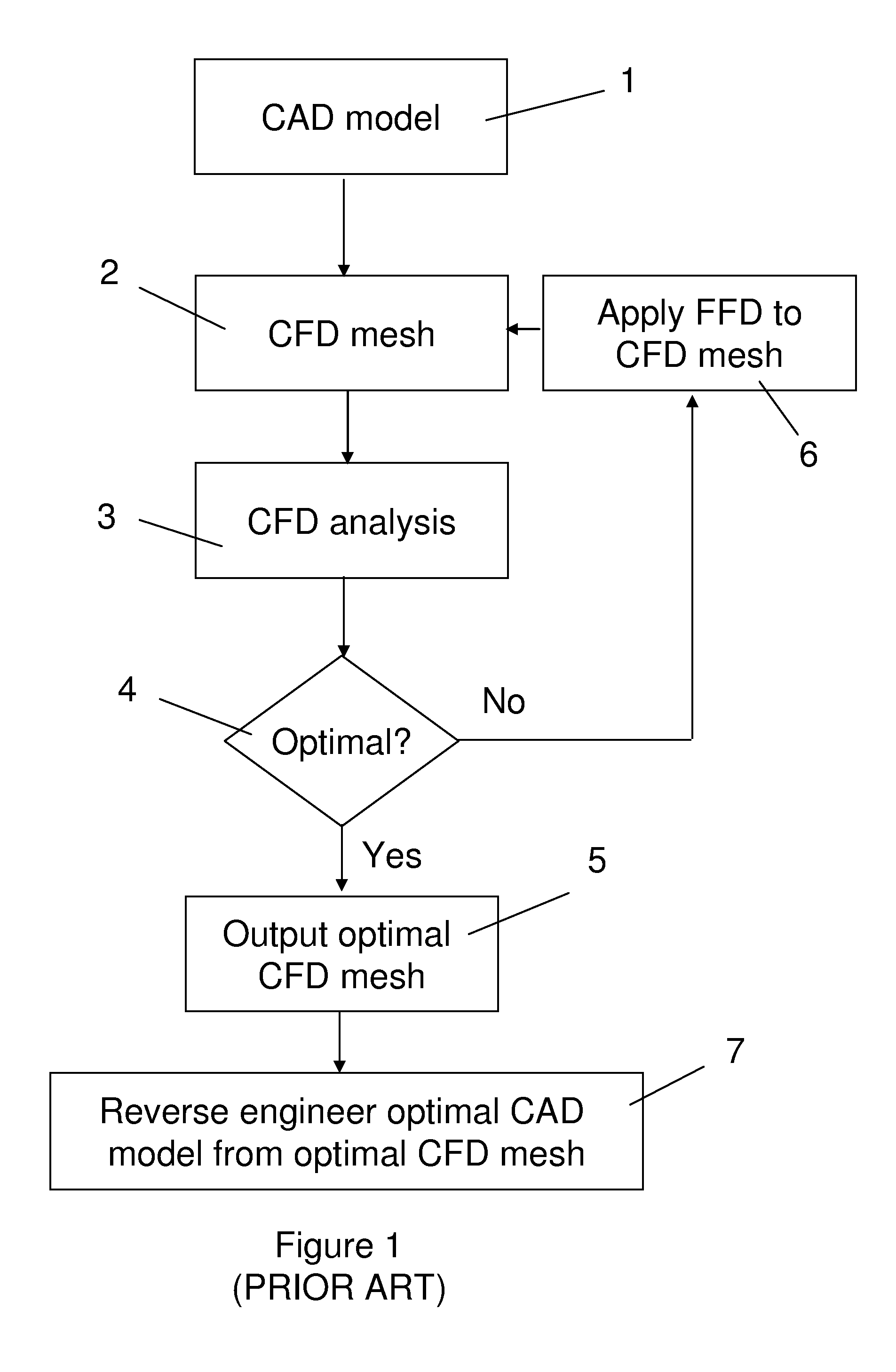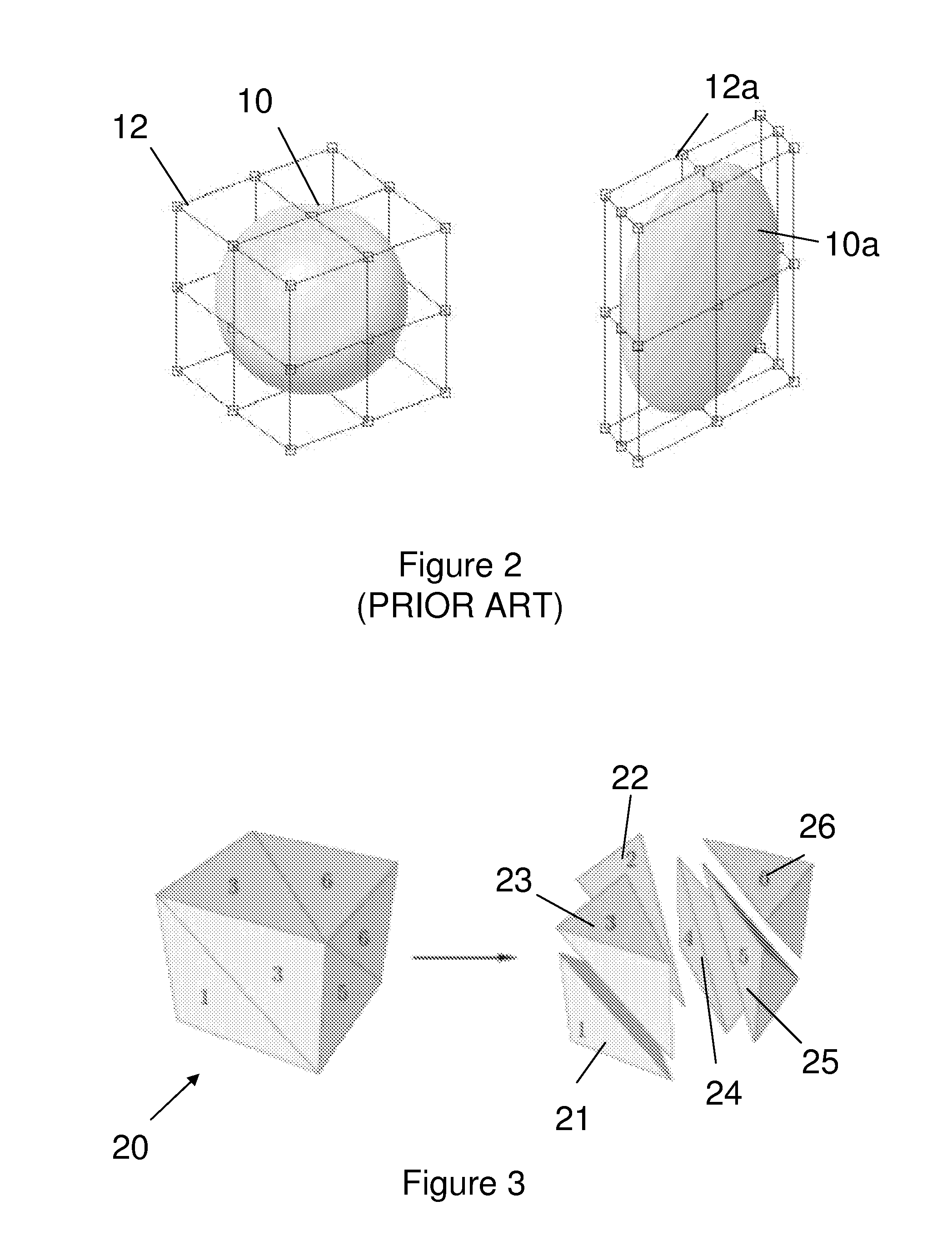Method of design optimisation
a design optimization and process technology, applied in the field of design optimization, can solve the problems of high fidelity, computational cost, and restricting the outcome of the optimisation process, and achieve the effect of reducing the cost of the optimisation process
- Summary
- Abstract
- Description
- Claims
- Application Information
AI Technical Summary
Benefits of technology
Problems solved by technology
Method used
Image
Examples
case study
[0101
[0102]In order to examine the practicalities of implementing the proposed FFD parameterisation and CAD integration methods, the set-up and initialisation of a case study is presented. As discussed above, the ultimate aim of this case study is the aerodynamic optimisation of a faring placed around the wing-fuselage junction (termed the “wing-fillet”) of a typical transonic passenger aircraft. This case study has been chosen as it requires the manipulation of a complex geometry with numerous geometrical constraints to test the proposed methodology. It is also an area of the flow field within which improvements may be possible.
[0103]A. Optimisation Objectives and Constraints
[0104]This case study aims to minimise the total drag experienced by the aircraft by only manipulating the shape of a wing-fillet. Each design is subject to the following aerodynamic constraints:
[0105]1. Angle of attack (AoA): 1 degree; and
[0106]2. Mach number, M=0.75.
[0107]These constraints are the design crui...
PUM
 Login to View More
Login to View More Abstract
Description
Claims
Application Information
 Login to View More
Login to View More - R&D
- Intellectual Property
- Life Sciences
- Materials
- Tech Scout
- Unparalleled Data Quality
- Higher Quality Content
- 60% Fewer Hallucinations
Browse by: Latest US Patents, China's latest patents, Technical Efficacy Thesaurus, Application Domain, Technology Topic, Popular Technical Reports.
© 2025 PatSnap. All rights reserved.Legal|Privacy policy|Modern Slavery Act Transparency Statement|Sitemap|About US| Contact US: help@patsnap.com



